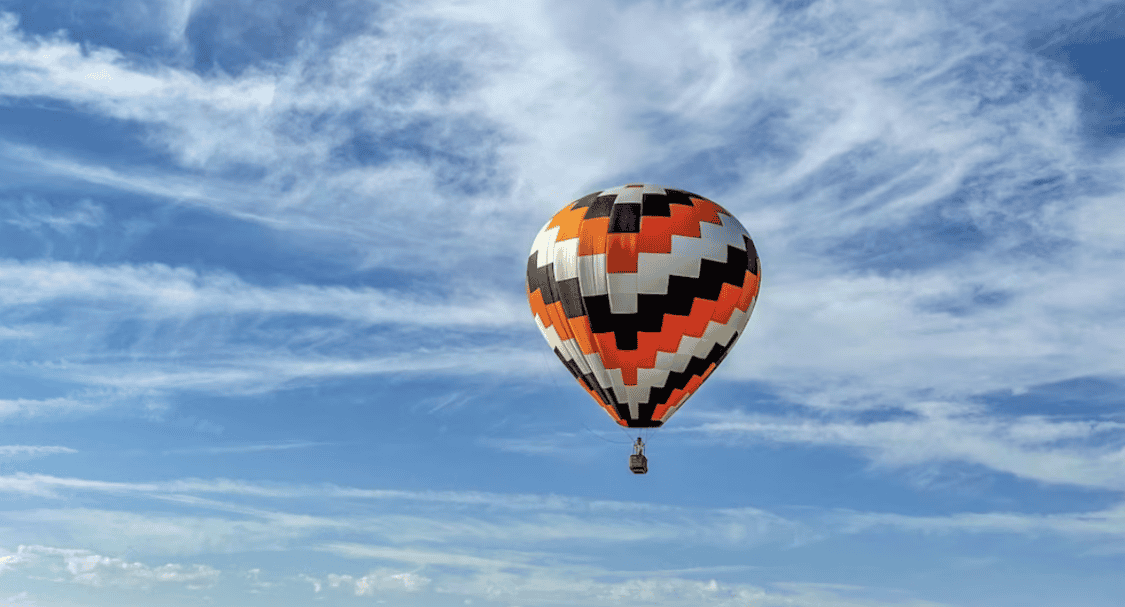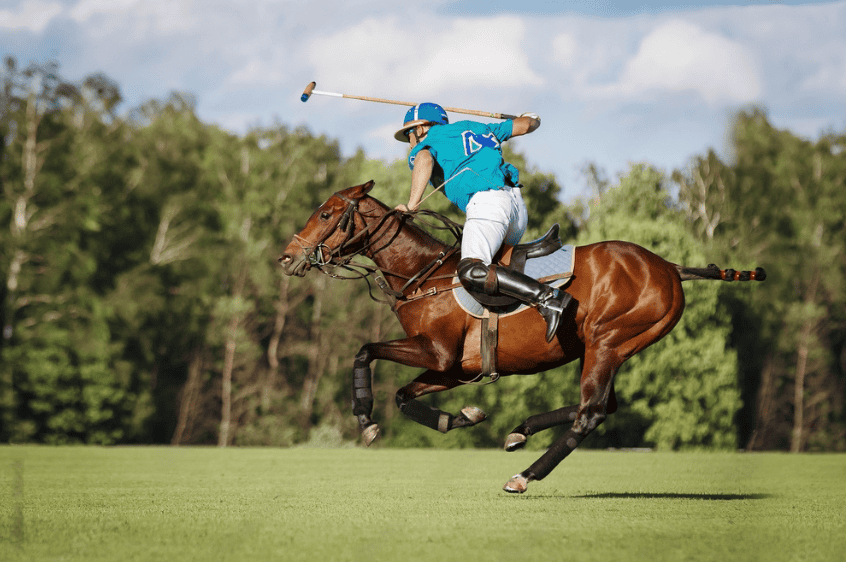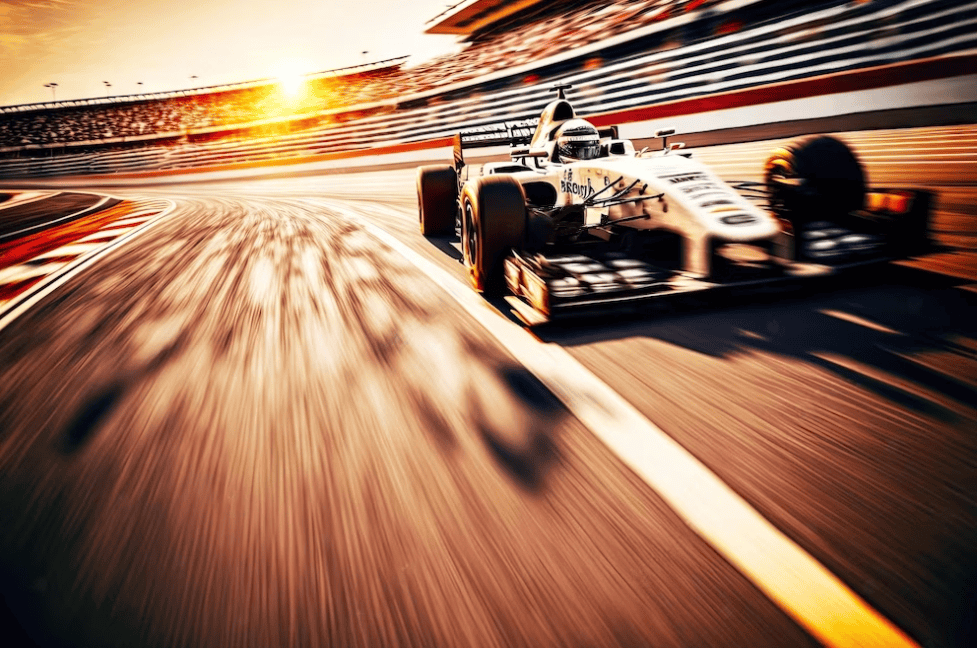Are you a sports enthusiast? What’s your favorite sport? Sports offer a fantastic way to stay active and develop valuable traits like teamwork, perseverance, and dedication. As the world evolves, sports gain more popularity. They provide a refreshing break from daily routines. From affordable home-played games to pricey pursuits, there’s a sport for everyone.
Sports bring joy and showcase talent on a level field. Some are easily accessible, while others demand substantial investment. We’ve all engaged in sports at some point. While most are budget-friendly, a few luxury sports come with hefty costs, limiting access. Yet, sports go beyond leisure; some require a significant financial commitment. Discover the top 15 most expensive sports below.
15. Ice-Hockey
Hockey stands as one of the costliest sports, widely recognized for its expenses. A quality set of hockey gear can easily tally up to $1,000 and last for years. Ice hockey, a team sport played on skates, entails additional costs like ice time, coaching, travel, and league fees.
The yearly travel expenses, including lodging and transportation, add up to around $3,000. Hockey equipment prices have surged in recent years, with the most expensive item being hockey skates. Various brands like CCM, Bauer, and True offer different models and variations within their lineups.
| First Played Country | First Played Year |
|---|---|
| England | 1875 |
| First Played Club | Montreal’s Victoria Skating Club |
14. Tennis
Tennis is undeniably one of the most expensive sports globally, especially for professional players. A comprehensive study by the U.S. Tennis Association in 2010 revealed that the average expenses for a pro tennis player’s season amount to $143,000. Due to its substantial prize pools, tennis players rank among the highest-paid athletes worldwide. Notably, Serena Williams has consistently topped the list of highest-earning athletes.
While casual players can start with a basic racquet and a few tennis balls, upgrading becomes inevitable for those seeking to advance beyond casual play. The initial inexpensive gear won’t last long, and racquets need replacement once the strings break. Coaching and international travel costs form a significant portion of expenses for aspiring professional tennis players, as extensive training and competing in numerous events worldwide are essential for skill development.
| First Played Country | First Played Year |
|---|---|
| Birmingham, England | 1873 |
| Leamington Tennis Club | 1873 |
13. Golf

Golf, being considered the epitome of luxury sports, often comes with a higher cost in comparison to other activities. With participation from the world’s wealthiest individuals, it has become an exclusive and pricey sport. Originating in Scotland, golf has retained its prestigious status, demanding expenses related to membership, course fees, and equipment.
The equipment and golf carts alone can amount to significant costs over time. Additional items like balls, towels, markers, and tees can further add to the expenditure. This exclusivity has led to golf being perceived as a sport for the affluent and elite. Nonetheless, numerous competitions like the U.S. Open Championship, The Masters Tournament, and the U.S. PGA Championship offer opportunities for players from all backgrounds to compete and enjoy the sport on a global stage.
| First Played Country | Kingdom of Scotland |
| First Played Year | 1764 |
| First Played Club | Prestwick Golf Club |
12. Archery
Archery, the art of shooting arrows with a bow, involves skilled archers, also known as bowmen or toxophilites. When teaching archery, one should consider the dominant eye for holding the bow. Smooth and fluid release of the string enhances accuracy in arrow flight.
Some argue that the hand with the most dexterity should draw and release the string, while the less dominant eye can be trained over time for aiming. Temporary use of an eye patch on the dominant eye can aid in this process. Archery expenses include shooting range rental ($10 per hour), coaching fees ($80-$200 per hour), and equipment costs (approximately $2,000). Additionally, travel expenses to regional competitions contribute to archery being among the world’s most expensive sports.
| First Played Country | First Played Year |
|---|---|
| Finsbury, England | 10,000 BC |
11. Fencing
Fencing proves to be a costly sport, particularly when engaged in at a competitive level. Although beginners may initially spend modest amounts, expenses can quickly escalate as fencers progress to the competitive stage. According to the U.S. Fencing Association, beginners usually invest around $7,000 annually, while high-level athletes typically shell out $20,000 per year. Additional costs for training maintenance, such as classes and coaches, also add to the financial burden. Aspiring competitors aiming for the top tier may witness a rapid increase in these supplementary expenses.
On the other hand, fencing is much more affordable at lower levels. Novice fencers generally spend only a few hundred dollars on equipment and instruction, whereas advanced fencers might allocate between $1,500 and $3,000. While some athletes may still manage to keep their costs relatively low even at the highest levels, the majority of top performers incur expenses ranging from $10,000 to $20,000 annually.
| First Played Country | First Played Year |
|---|---|
| Spain | Between the 17th and 19th centuries |
10. Modern Pentathlon
Modern Pentathlon is renowned as the world’s most exclusive and expensive sport, incorporating five distinct disciplines rather than just one. These activities include shooting, show jumping, jogging, fencing, and swimming. The term “pentathlon” originates from the Greek words “Pente,” meaning five, and “Athlon,” denoting competition. The five events were designed to assess the diverse abilities of a 19th-century soldier.
Although the preparation for these events is straightforward, show jumping stands out as the most costly aspect due to the necessity of owning, caring for, and training a horse.
The inaugural modern pentathlon competition took place in 1912, and since then, its regulations have undergone several revisions. Despite numerous attempts to remove it, the sport has remained an integral part of the Summer Olympic Games since its inception. Additionally, annual world championships for modern pentathlon have been held since 1949.
| First Played Country | Ancient Greece |
| First Played Year | 708 BC |
| First Played Club | Ancient Olympic Game |
9. Wingsuiting
Wingsuiting is an exhilarating sport that shares similarities with skydiving. Instead of freefalling, wingsuiters don a specialized wingsuit that allows them to experience the thrill of human flight. Soaring through the air at speeds of up to 120 miles per hour, wingsuiters undergo extensive training and certification before taking the leap from an aircraft, making it an extreme and adrenaline-pumping activity.
However, indulging in this high-flying pursuit comes at a significant cost. Expenses related to wingsuiting include skydiving training, plane rentals, equipment purchases, pilot fees, and comprehensive insurance coverage. As a result, it can leave a substantial dent in your finances. This sport is often regarded as one of the most intense and frightening endeavors, and its history has been marred by tragic incidents, leading to numerous fatalities.
The expenses involved in wingsuiting can vary widely. The cost of a wingsuit itself can range from $2,500 to $7,000, but when considering the additional expenses for training, equipment, and essential ground safety measures, the annual expenditure can soar up to nearly $50,000.
Despite its risks and costs, wingsuiting continues to captivate thrill-seekers and adventurers, drawing those who seek the ultimate rush of soaring through the skies with the aid of a wingsuit.
| First Played Country | US |
| First Played Year | 1990 |
8. Воbslеddіng
Bobsledding, a captivating team winter sport, involves thrilling timed runs in gravity-powered sleighs along short, winding, and banked ice courses. Its origins trace back to the late nineteenth century when wealthy Victorian British visitors staying at Caspar Badrutt’s Palace Hotel in St. Moritz, Switzerland, crafted the first bobsleds. Interestingly, in 2012, the American actress Lolo Jones made history by venturing into bobsledding and embarking on her training journey.
Much like moto racing, bobsledding also relies heavily on sponsorship for support. However, participating in this sport as an individual comes with a significant cost. The expenses involved can soar up to $100,000, making it a substantial investment. Moreover, constructing a bobsled from scratch can be an even more costly endeavor, potentially reaching millions of dollars. Typically, these sleek sleds are crafted using a combination of fiberglass and steel, coming in various shapes and weights to suit different racing conditions.
Despite the financial demands, bobsledding continues to enthrall both athletes and spectators alike, with its blend of speed, skill, and teamwork on the icy tracks. The legacy of bobsledding’s rich history and its ongoing pursuit of excellence draw passionate participants, ensuring that this exhilarating winter sport remains a favorite among thrill-seekers worldwide.
| First Played Country | Switzerland |
| First Played Year | 1897 |
| First Played Club | St. Moritz Bobsleigh Club |
7. Hot Air Baloon Racing

Hot Air Balloon Racing has seen a recent surge in popularity, becoming one of the most expensive sports worldwide. Despite its high costs, it remains a well-loved and rapidly growing activity. Adventurers seeking an hour-long balloon ride can expect to pay approximately $300 for the experience. However, most participants go the extra mile and invest in their own balloons, which can carry a hefty price tag of up to $20,000. Aspiring racers must undergo rigorous training to become proficient and knowledgeable about the safety measures associated with this thrilling sport.
Training pilots to navigate these majestic balloons is no small expense either, with the cost reaching up to $3,000. While traditional balloon shapes remain popular for both commercial and non-commercial purposes, modern advancements have led to the creation of balloons in a wide array of shapes, including whimsical designs resembling rocket ships or various commercial objects.
The history of hot air ballooning is fascinating, with the Americas witnessing its first flight from Philadelphia’s Walnut Street Jail on January 9, 1783, achieved by the renowned French aviator, Jean Pierre Blanchard.
Moreover, alongside conventional hot air balloons, there are thermal airships that have the unique ability to launch themselves into the air instead of solely relying on the wind for propulsion, adding an extra dimension of excitement to this already captivating sport.
| First Played Country | First Played Year | First Played Club |
|---|---|---|
| Paris, France | 1783 | The Albuquerque International |
6. Ski Jumping
Ski jumpers brave the winter conditions, vying to achieve the longest leaps as they gracefully descend a winding ramp on their skis. However, their success in this sport is not solely determined by their jumping prowess; it also depends on their aerial technique and various other jump-related factors. The expenses associated with ski jumping at the professional level are staggering, totaling over $100,000, which includes costs for equipment, ski jumping facilities, and coaching fees. It’s no wonder that ski jumping consistently ranks among the most expensive sports globally.
This thrilling sport has a long history, dating back to the 18th century, but it wasn’t until 1924 that it earned a place in the prestigious Olympic Games. Interestingly, ski jumping enthusiasts have found a way to enjoy the sport even during the summer months. By covering a grassy slope with water-soaked plastic and utilizing porcelain tracks, ski jumping can be simulated in the warm season.
Moreover, the FIS Ski Jumping Grand Prix, established in 1994, has become the premier summer tournament in this discipline, drawing top competitors from around the world.
| First Played Country | First Played Year | First Played Club |
|---|---|---|
| Olaf Rye, Eidsberg church, Eidsberg, Norway | 1808 | Norway Club |
5. Equestrian
Equestrian, one of the most captivating Olympic sports, revolves around horses as its primary equipment. Participants showcase their skills in driving, steeplechase, vaulting, or horseback riding. However, engaging in this sport is not accessible to everyone, as it entails purchasing, training, and caring for a horse, which can be prohibitively expensive, with annual costs reaching nearly $200,000. Consequently, equestrian activities are typically reserved for affluent individuals who can afford such expenditures. The pinnacle of equestrian competition lies in the three-day Horse Trials, where the talents of both the horse and rider are put to the test.
Equestrian is a sport that amalgamates artistry and athleticism. Horses play a central role in various events, including reenactments, ceremonies, harness racing, horse exhibitions, and captivating displays, often showcasing their ability to pull carriages. Riding arenas offer indoor competition venues and facilitate horse and rider training, ensuring practice and competition can occur in all weather conditions.
| First Played Country | First Played Year |
|---|---|
| France | 1900 |
4. Polo

Polo, one of the most ancient sports in the world, traces its origins back to Persia over two thousand years ago. It began as a game played by Iranian tribesmen and later found its way to China, India, and eventually Europe, where it gained popularity among the British. Interestingly, British soldiers learning Persian languages from experts also passed on their knowledge of the sport to them.
While the idea of playing polo may not appear overly expensive at first, the costs can escalate significantly for those aspiring to compete at a high level. While joining a club and participating in tournaments may have reasonable fees, the real expense lies in acquiring horses. Purchasing horses for polo can reach six figures per animal, with the most prized ones exceeding $1 million. Since a full match requires multiple horses, each of which can cost hundreds of thousands of dollars, the financial commitment becomes quite substantial for serious players.
| First Played Country |
|---|
| Persia (Iran) |
3. Sailing
Sailing is far more intricate than just connecting bamboo to a sail and gliding across the water. Presently, it stands as one of the most expensive sports globally, requiring a substantial investment in a sailboat, surpassing even the costs of luxury supercars. Beyond the initial purchase, maintaining a sailboat demands significant financial resources, not to mention finding a suitable dry location to store it once the competitive season concludes.
Preserving the sailboat’s condition during months of storage becomes crucial to ensure it’s ready to hit the water again when the next competition season arrives. Sailing’s essence lies in the intricate understanding of sail physics, as the wind’s power is harnessed to generate lift and drag. Calculating the best angle for the sails to achieve optimal performance along a specific course relies on the concept of apparent wind, which considers the wind’s perception from a moving vessel.
| First Played Year | First Played Club |
|---|---|
| 1896 | NYYC |
2. Formula 1
Formula 1, a renowned motorsport, features high-speed racing with top-of-the-line racing cars. The manufacturing of these cars incurs substantial expenses, leading to F1 teams requiring significant financial resources. Moreover, as these vehicles are high-performance machines, maintenance costs are also a significant factor. Teams must invest in the design, construction, and rigorous testing of their vehicles before competing in the 20 races held throughout the year.
In Formula 1, the best teams have the freedom to spend lavishly, but victory is not assured solely by financial prowess. Success in this competitive sport relies on a combination of factors, including skilled drivers, engineering excellence, strategic decisions, and constant innovation. The dynamic nature of Formula 1 racing ensures that triumph cannot be simply bought, making it an enthralling and unpredictable spectacle for motorsport enthusiasts.
In Formula 1, adherence to stringent regulations is crucial, encompassing various aspects such as vehicle weight, engine power, fuel consumption, and aerodynamics. The sport imposes a limit of 14 sets of tires per driver for the entire weekend, with all teams relying on the same tire supplier. Due to the substantial costs involved, some participants may seek sponsorships to support their entry, as expenses could soar as high as $190,000.

As for Moto racing, it demands specialized, high-performance sports cars and additional safety gear, driving up the overall expenses. The nature of the sport entails inherent risks, given the possibility of crashes, making it one of the most hazardous sporting endeavors in the world. Despite the challenges and costs, both Formula 1 and Moto racing offer exhilarating spectacles that captivate motorsport enthusiasts worldwide.
| First Played Country | First Played Year |
|---|---|
| Silverstone, England | 1950 |
1. Тhе Whіtіаngа Fеѕtіvаl Of Sрeed
The Whitianga Festival of Speed, held annually in New Zealand, has earned the distinction of being the most expensive sport in the world. This exhilarating event features a diverse range of activities, including jet ski races, helicopter races, ground vehicle races, powerboat races, and parachute swooping. Drawing in more than 20,000 attendees each year, the festival has become a highly significant and eagerly awaited occasion in New Zealand, having been successfully running for a decade.
Speed and finances play pivotal roles in this extraordinary event. Organizing a helicopter race alongside ground vehicles is an exhilarating prospect, albeit one that demands a considerable financial investment. The overall costs associated with hosting and maintaining all these thrilling sports can amount to billions of dollars. The equipment required for each activity, such as parachutes, boats, skis, and helicopters, comes with exorbitant price tags, making ownership of such gear an endeavor that costs millions of dollars. Nevertheless, the Whitianga Festival of Speed continues to captivate enthusiasts, offering an unforgettable and adrenaline-pumping experience for all involved.
| First Played Country | First Played Year |
|---|---|
| New Zealand | 2009 |
Conclusion
The world of sports boasts a diverse array of activities that cater to various interests and passions. However, this list sheds light on the top 15 most expensive sports, where the pursuit of excellence comes with a hefty price tag. From the high-flying equestrian events to the adrenaline-pumping Formula 1 races, each sport demands significant financial investment. The allure of these sports lies not only in their thrilling nature but also in the exclusivity they offer. Many of these activities are accessible only to the wealthy elite, who can afford the expensive equipment, training, and maintenance costs required to compete at the highest level.
